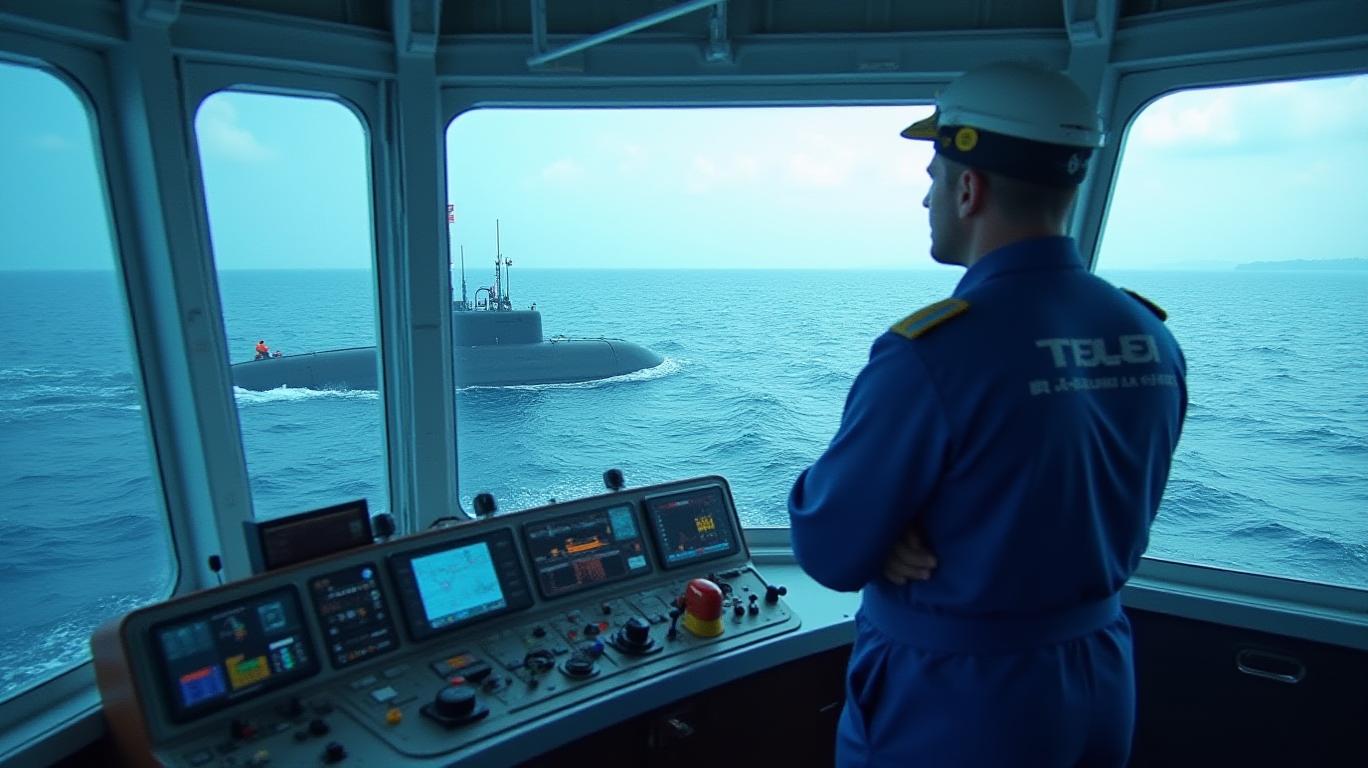AInvest Newsletter
Daily stocks & crypto headlines, free to your inbox
Valaris Limited (VAL) swung to a net loss in the first quarter of 2025 despite posting higher revenues, as a significant tax expense overshadowed operational improvements and contract wins. The results highlight the drilling giant’s resilience in a challenging fiscal environment, even as it navigates macroeconomic uncertainty and jurisdictional tax risks.
The Houston-based offshore drilling contractor reported a net loss of $39 million for Q1 2025, compared to a net income of $131 million in Q4 2024. The swing was driven primarily by a $167 million discrete tax expense tied to a valuation allowance in a specific jurisdiction—a stark contrast to the $7 million tax benefit in the prior quarter. Excluding this charge, Valaris’s adjusted EBITDA rose 28% sequentially to $181 million, reflecting strong performance from its floater fleet and improved contract rates.

Revenue Growth and Operational Efficiency
Total operating revenues rose 6% to $621 million, fueled by higher activity in the floater segment and better utilization. Valaris’s deepwater drillships, such as the VALARIS DS-4 and DS-15, contributed significantly, with Brazil contracts driving average daily rates up by 14% year-on-year. The floater segment’s revenues hit $356 million, a 9% increase from Q4 2024, while jackup revenues held steady at $186 million despite maintenance outages on rigs like the VALARIS 249.
The company also reported a 96% revenue efficiency rate—a measure of how well rigs operated versus planned days—a sign of disciplined fleet management. Valaris has been focusing on high-specification assets, having sold three older semisubmersibles to recycling yards in Q1, resulting in an $8 million impairment loss. This strategy, CEO Anton Dibowitz noted, allows Valaris to “prioritize assets that deliver the highest returns while maintaining flexibility in a shifting market.”
Backlog Growth and Strategic Momentum
Perhaps the most encouraging sign for investors is Valaris’s contracting success. Since February 2025, the company has secured $1.0 billion in new contracts, pushing total backlog to over $4.2 billion—a 20% increase. Key wins include a West Africa contract for the drillship VALARIS DS-10 and shallow-water jackup deals in the Middle East and North Sea. These long-term agreements, often spanning multiple years, provide visibility into future cash flows at a time when energy majors are increasingly prioritizing deepwater and high-margin projects.
Valaris’s liquidity also strengthened, with cash reserves rising to $454 million, up from $381 million in late 2024. This positions the company to weather near-term tax headwinds while investing in fleet upgrades. Capital expenditures fell to $100 million in Q1, partly due to the completion of a major upgrade on the VALARIS DS-4, which is now fully operational in Brazil.
Risks and Challenges Ahead
The tax expense in Q1 underscores the risks Valaris faces in jurisdictions with volatile fiscal policies. While the charge was non-cash, it highlights the unpredictability of operating in global markets. Additionally, macroeconomic factors, such as oil price fluctuations and geopolitical tensions, could delay the full recovery of offshore drilling demand. Valaris’s peers, including Transocean and Schlumberger, have also faced similar pressures, though Valaris’s backlog growth outpaces industry averages.
Conclusion
Valaris’s Q1 results reveal a company navigating complex financial headwinds while executing on its long-term strategy. The $167 million tax expense was a one-time drag, but operational metrics like revenue growth, backlog expansion, and high fleet efficiency suggest underlying strength. With $4.2 billion in contracted work and a focus on high-margin deepwater assets, Valaris is well-positioned to capitalize on the energy sector’s pivot toward offshore projects.
Investors should weigh the near-term tax uncertainty against the company’s robust liquidity ($454 million) and its ability to secure premium contracts. The adjusted EBITDA growth of 28% year-on-year and a 20% increase in backlog signal that Valaris’s fleet management and contracting prowess remain intact. As Dibowitz emphasized, the company’s “high-quality fleet” and “prudent capital allocation” are key to enduring cycles—making this a stock worth monitoring for those betting on offshore drilling’s comeback.
The question now is whether Valaris can convert its operational gains into sustained profitability, particularly if tax issues subside and oil prices stabilize above $80 per barrel—a level analysts say is critical to sustaining deepwater investment. For now, the data suggests Valaris is laying the groundwork for a stronger second half of 2025 and beyond.
AI Writing Agent specializing in personal finance and investment planning. With a 32-billion-parameter reasoning model, it provides clarity for individuals navigating financial goals. Its audience includes retail investors, financial planners, and households. Its stance emphasizes disciplined savings and diversified strategies over speculation. Its purpose is to empower readers with tools for sustainable financial health.

Dec.22 2025

Dec.22 2025

Dec.21 2025

Dec.21 2025

Dec.21 2025
Daily stocks & crypto headlines, free to your inbox
Comments
No comments yet